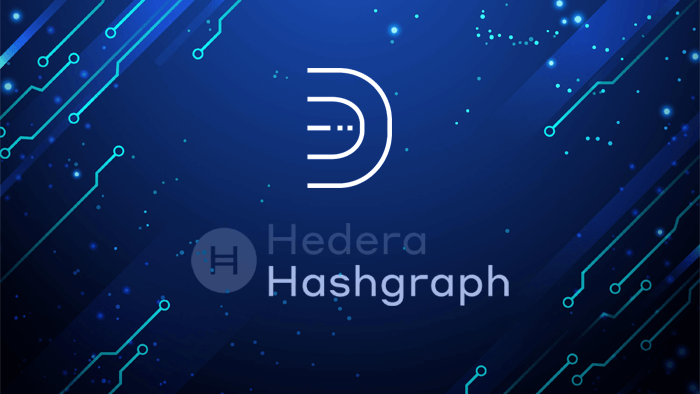Hedera Hashgraph, the most used public ledger in the world is reaching new milestones. You might be wondering what Hedera is and why it matters. I'm going to explain everything you need to know about this blockchain in this article.
Hedera is a decentralized, open-source, proof-of-stake public ledger that uses a new and innovative consensus algorithm called hashgraph.
Unlike blockchain-based ledgers, hashgraph can achieve fast, fair, and secure consensus among network nodes without relying on leaders or miners. This makes Hedera more scalable, efficient, and eco-friendly than other public ledgers.
But that's not all. Hedera is also governed by a council of leading organizations from different sectors and regions of the world. These organizations ensure that Hedera is stable, secure, and decentralized. They also contribute to the development and adoption of Hedera's network services.
These services include smart contracts, tokenization, and consensus service. They enable developers to build decentralized applications and ecosystems that can solve real-world problems and create value for users. Hedera's network services are used by various industries and sectors, such as sustainability, payments, identity, NFTs, and DeFi.
Hedera has recently achieved some impressive milestones that demonstrate its growth and adoption. For example, It has surpassed 9 billion transactions on its mainnet in just over two years since its launch. That's more than any other public ledger in the world. It has also become the most energy-efficient public ledger in the world, consuming less than 0.001 kWh per transaction.
What Is Hashgraph Consensus And Why Is It Better Than Blockchin?
You have heard of blockchain, the technology that powers Bitcoin, Ethereum, and other cryptocurrencies. Blockchain is a type of distributed ledger that records transactions in blocks that are linked together by cryptographic hashes.
Blockchain relies on a consensus mechanism, such as proof-of-work or proof-of-stake, to ensure that all nodes agree on the validity and order of transactions.
However, blockchain has some limitations that prevent it from scaling to meet the demands of the web.
For example, blockchain has low throughput, meaning that it can only process a limited number of transactions per second.
It also has high latency, meaning that it takes a long time for transactions to be confirmed and finalized.
That’s where hashgraph comes in. Hashgraph is a new and innovative consensus algorithm that was invented by Dr. Leemon Baird, the co-founder and chief scientist of Hedera. Hashgraph is based on a data structure called a directed acyclic graph (DAG), which consists of nodes connected by edges. Each node represents an event, which is a message containing a transaction and a timestamp. Each edge represents the communication between nodes.
Hashgraph uses a protocol called gossip about gossip to spread information among nodes. Gossip about gossip means that each node randomly selects another node and tells it everything it knows. The recipient node then does the same with another node, and so on. This way, information propagates quickly and efficiently across the network.
It also uses a technique called virtual voting to achieve consensus among nodes. Virtual voting means that each node can calculate what other nodes would vote on a given event, based on the information in the hashgraph. This way, nodes can reach a consensus without sending any votes over the network.
Because of its high throughput, it can process thousands of transactions per second.
And with low latency, it takes only a few seconds for transactions to be confirmed and finalized while consuming very little energy.
There's also a mechanism that ensures fair ordering of transactions, meaning that transactions are ordered according to their timestamps and not by the influence or power of any node.
Hashgraph also ensures fair access to the network, meaning that anyone can create and submit transactions without any censorship or discrimination.
Validation of transactions are achieved by the majority of nodes and not by a single authority or entity.
It's also the core technology behind Hedera, the public ledger that uses it to achieve fast, fair, and secure consensus among its network nodes.
Who Are The Members of The Hedera Governing Council And What Do They Do?
Hedera is not just a technology platform; it is also a governance platform, which is governed by a council of leading organizations from different sectors and regions of the world. These organizations ensure that Hedera is stable, secure, and decentralized.
The Governing Council consists of up to 39 members who serve for a maximum of two consecutive three-year terms.
These council members represent various industries such as technology, telecommunications, finance, healthcare, education, entertainment, and more.
They all have equal voting rights and decision-making power over the direction and development of Hedera, and they oversee key aspects such as network operations, software updates, legal and regulatory compliance, treasury management, marketing and adoption strategies, and more.
The council members also run network nodes that validate transactions and participate in consensus. By running nodes across different geographies and jurisdictions, they ensure that Hedera is resilient to attacks or failures.
Published meeting minutes and financial reports are available on Hedera’s website for public review. Members also contribute to the open source codebase and ecosystem standards through Hedera Improvement Proposals (HIPs).
These members are some of the most respected and trusted organizations in the world. They include:
- Boeing
- Deutsche Telekom
- IBM
- LG Electronics
- Standard Bank
- Tata Communications
- University College London
- And many more
Conclusion
Hedera is the most used public ledger in the world. It is also the most energy-efficient public ledger in the world. It is powered by innovative technology, diverse and decentralized governance, vibrant community, and real-world utility. It is the platform for building the next generation of the web.






